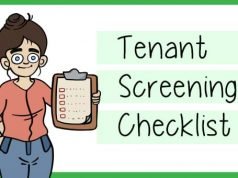Home prices are fluctuating, mortgage rates are rising, and home building has slowed across the country as the impact of a possible recession lingers. If you need to sell your home now or in the near future you may be considering what possible impact selling in a down market may have on your home’s sale price. While you may be nervous or even thinking of putting off selling, first consider these tips to sell your house in a down market.
- Find a Trusted Agent
There may be a dozen ways to get your home to sell quickly and at a great price even in a down market, but none is more important than finding a trusted real estate agent. A top rated real estate agent does much more than make the selling processes easier. He/she can manage documentation, negotiate a higher sales price, and get your home sold faster. In every real estate transaction there are around 25 documents, some of which are difficult to understand. In the process of selling your home, a real estate agent will act as a resource and an advocate on your behalf to protect your interests. In addition, agents are known for their negotiating skills and generally bring in an average of $39,000 more on the price of home than those that are sold as For Sale by Owner. Finally, a top real estate agent that knows your area and the current housing market will be able to sell your home quickly even in a down market.
- Price your home correctly
In a hot seller’s market a small uptick in home prices can be expected and is often overlooked by buyers. However, during a down market, when buyers are concerned about sticking to their budget, it is important to price accordingly. During a slower market when inventory remains somewhat tight, pricing your home at market value will keep it at a sweet middle spot so it will stand out to a large group of buyers. Market value pricing will also ensure your home does not sit on the market for too long and will not need large price reductions which could deter buyers.
You can find your home’s market value with a comparative market analysis or a pre-listing appraisal. A comparative market analysis (CMA) is a comprehensive report that compares your property against recently sold properties nearby to determine a beginning listing price for your home. It will consider features of comparable properties such as square footage, age of the home, location, upgrades, nearby amenities, and other data. Your real estate agent can use the information as a gauge to determine the best listing price. You can also have a pre-listing appraisal completed. A certified appraiser will independently tour your home and review your square footage, overall condition, and features. He or she will compare that information to other houses in your area.
- Prepare your home to sell
No matter how talented your real estate agent or how hot the market, a filthy unkempt home will be hard to sell. Prepare your home to sell by cleaning, decluttering, and staging the exterior and interior.
Increase curb appeal
Spruce up your curb appeal with a freshly trimmed lawn that is free of weeds and bare spots. Add spots of color with freshly planted flowers around your front porch or a few well placed planters. You can also power wash your home’s exterior, paint your front door black, or upgrade your garage doors.
Declutter
No home looks ready to sell if it is littered with clutter and overly personalized items. Devote an entire weekend (or week if necessary) to removing unnecessary items from your home. These will include anything that is visible to potential buyers. So even your closet and linen storage should be decluttered to show off your home’s ample storage areas. Remove unneeded clothes, shoes, coats, blankets, towels, washrags, etc. from storage areas. Then move to small storage areas such as the medicine cabinet and under the sinks. Remove anything that does not need to be there. Remember you are setting the stage for potential buyers to envision themselves in your home. Remove excessively personal items such as family photos and memorabilia as well as extra furniture and clutter on your counters and shelves.
Deep Clean
With a freshly decluttered home you can deep clean especially in areas that are often overlooked. Scrub the back of the refrigerator, wipe down the baseboards, dust the light fixtures and ceilings. Basically clean every square inch of your house so that it appears as new and well kept as possible. If you have carpet you should have it steam cleaned or replaced if it is particularly worn or smelly.
- Be prepared to show
The average home takes between 10 and 25 showings before it sells. During the selling processes your home needs to remain staged and show ready at all times so that you are prepared if a surprise buyer needs to pop by for a quick showing. To be as prepared as possible, keep your personal items stored, keep up with the laundry, take out the trash, and continue to vacuum and wipe down high-traffic and use areas.
- Complete repairs
Prior to listing, your home should undergo a pre-listing inspection to make you and your real estate agent aware of any repairs that need to be done before listing. Repairs that need to be done to maintain the value of your home are those that will fall under the category of deferred or neglected maintenance. Items in this category are old HVAC systems, termite damage, decaying wood, crumbling foundation, frayed electrical wires, cracked driveways, leaky plumbing, damaged gutters, and missing roof shingles. Complete these types of repairs prior to listing to ensure that potential buyers will not be deterred or your home sale won’t be halted by repair issues.
- Offer concessions
Seller concessions are incentives that you can offer to buyers to make them more likely to purchase your home. Concessions often creep up during the inspection process when buyers ask for concessions based on repairs that can be made before closing. You can offer to handle some repairs such as those for plumbing, sewage, and septic problems, electrical or fire hazards, infestations, HVAC problems, roof damage, structural damage, asbestos, radon, and lead paint, and broken appliances. You can also offer to pay closing costs which can cost as much as 2% to 5% of the home’s sale price. Some closing cost credits can include escrow fees, title fees, attorney fees, recording fees, taxes, interest rate buydowns, and loan origination feas. Finally, some concessions may be a bit more unconventional. Buyers have been known to request items that don’t come with the house such as a chandelier, washer and dryer, draperies, custom fixtures, or other furnishings.
- Market like a pro
Your real estate agent should have a marketing strategy that leverages multiple media formats. Marketing begins with professional photographs of your home that can be added to your listing as well as used on media platforms such as Facebook and Instagram. These are perfect platforms to add a virtual tour or a live look at your home. Technology savvy buyers will appreciate a 3-D walkthrough of your home as well as an enticing listing on the MLS and major real estate sites. In addition, your agent should market directly to investors, other realtors who may have a buyer, and clients on their call and email list. Finally, don’t neglect postcards and print ads as well as an open house or two.
Don’t let the possibility of a down market deter you from selling your home. With the right real estate agent, a solid plan, and attention to detail you can sell your home quickly and at a great price even during a down market.











